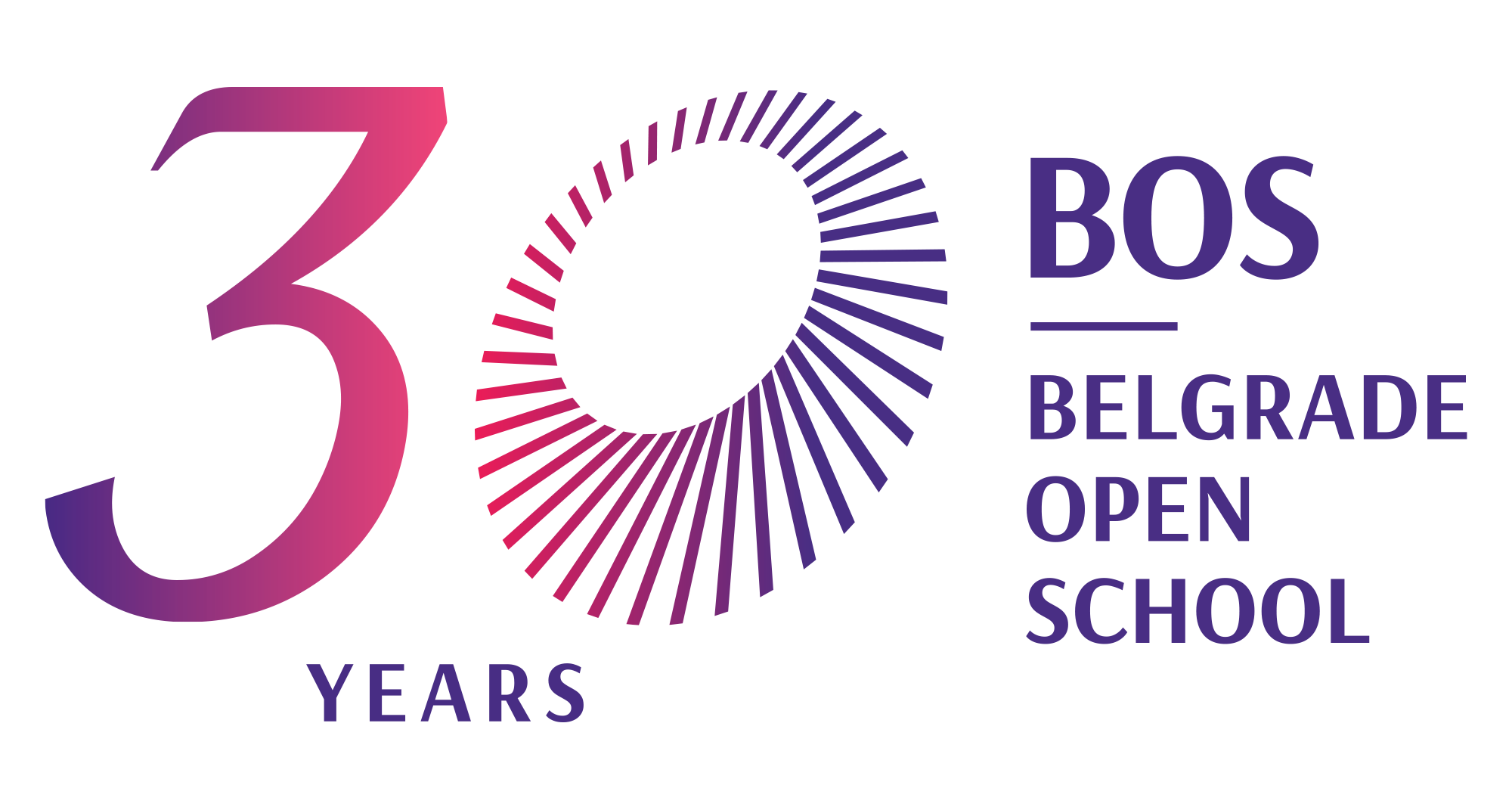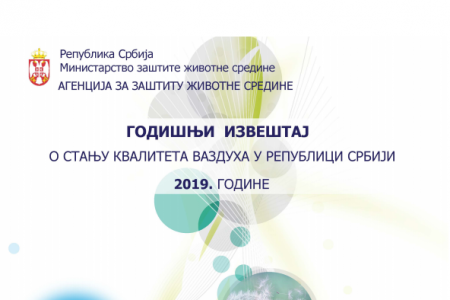Late last year, the United Nations General Assembly chose September 7th as the day to be celebrated in the future as International Day of Clean Air and Blue Skies. Yesterday, on the first International Day of Clean Air, September 7th 2020, the public in Serbia got the latest insight into how far exactly the air in most urban areas in Serbia is far from being "clean".
The Annual Report on the Air Quality in the Republic of Serbia in 2019, published by the Environmental Protection Agency, shows that in the previous year the air was excessively polluted in the following cities: Belgrade, Nis, Smederevo, Kosjeric, Pancevo, Novi Sad, Uzice, Bor, Valjevo, Kraljevo, and Subotica. In almost all of these cities, the air was excessively polluted due to the high concentration of PM10 and (or) PM 2.5 particles, except for Bor, which is categorized among the cities in the highest category of pollution due to excessive concentration of sulfur dioxide (SO2).
When comparing this year's report with last year's, several important conclusions and observations stand out:
1) Practically all larger urban areas in Serbia are faced with excessive air pollution.
The change concerning last year's report is in the fact that Novi Sad and Nis, unlike last year, are classified as cities with excessively polluted air. However, Kragujevac and Sremska Mitrovica dropped out of that group. While for Sremska Mitrovica the Report states that "the lack of measurement of suspended particles in January and February gave an inadequate picture that air quality was the first category", the assessment of air quality in Kragujevac is questionable when two additional information from the Report are taken into account: 51 days with excessive pollution of PM10 particles was recorded. In addition, the state measuring station sent 86% of the valid hourly values for this pollutant. Considering that the valid regulations state that the daily limit value of PM10 particles must not be exceeded more than 35 days a year, as well as that the required minimum data availability is 90%, the assessment of air quality in Kragujevac can rightly be questioned.
2) Pollution is greatest during the heating season, the cause lies in heating, but industrial pollution is a problem as well:
When you look at the inventory of pollutants, that is an overview of sectors that are dominant emitters of pollutants, the picture is almost unchanged in comparison with the last year's report: excessive pollution with suspended PM10 and PM2.5 particles comes from the heating sector, ie from heating plants with less than 50MW installed capacity and individual household heating. As far as sulfur dioxide pollution is concerned, although the emissions of this gas predominantly come from the electricity and heating production sector, we rightfully assume that the sulfur dioxide emissions in the city of Bor are of industrial origin. Data on air quality in Bor is particularly worrying since the concentration of sulfur dioxide dangerous to human health was recorded 13 times in this city in 2019, and that the target value of heavy metals (arsenic and cadmium) was exceeded in this city, where the concentration of arsenic at one station was almost 100 times higher than the target value.
3) The air is still of the first category (clean) - mainly in environments where the concentration of suspended particles is not measured:
During the preparation of the Report, data from the Environmental Protection Agency network of air quality stations, the City Institute for Public Health of Belgrade, Provincial Secretariat of Vojvodina, the cities of Pancevo, Sremska Mitrovica, Uzice, Pozarevac, Subotica, Kraljevo and Sombor were used. The Agency states that the City of Belgrade did not submit data from the city network, despite repeated requests. It is noticeable that the concentration of PM10 particles is not measured at 12, while the concentration of PM2.5 particles is not measured at 17 stations of all the stations where the air was rated as clean. These data show that it is necessary to further improve the monitoring in the state network so that the measuring stations would provide data on the concentrations of all pollutants. Numerous local institutes that contribute to the Agency's Report also put on the agenda the issue of improving local monitoring, what local governments must do in cooperation with local public health institutes. The Institute for Public Health of Serbia "Milan Jovanović Batut" in its annual analysis named "Urban air pollution in the territory of the Republic of Serbia measured with the network of public health institutions in 2019" among other things, states that the trend of low representation of particulate pollution monitoring with PM10 and PM2.5 type particles is continued ”.
4) The quality of monitoring has been improved at the level of the entire network, but some of the key stations have not met the data quality standards
One of the key data from the Report is on the quality of monitoring in the state network. This is encouraging, as, according to the latest report, the quality of monitoring in the state network, in terms of availability of valid hourly values - has been drastically improved: as many as 85% of stations delivered over 90% of valid hourly values, data quality. However, it is noticeable that many stations, which traditionally record high pollution, did not meet the standards in terms of quality of data on the concentration of PM10 particles. These are, among others, the following stations: Kosjerić, Niš (Institute of Public Health), Novi Sad (Rumenačka), Belgrade (Novi Beograd), Sremska Mitrovica, Kragujevac. This directly affected the air quality assessment for Kragujevac and Sremska Mitrovica - cities where the air was assessed as excessively polluted last year, while this year these cities were classified as clean air cities - due to insufficient measurement.
5) Insufficient data on air quality in the areas of pollutants from the industrial sector
Although air pollution in Serbia is primarily related to heating and electricity production, industrial pollution is also present in certain local areas. It is primarily about Smederevo and Sabac, whose locals regularly witness increased air pollution of industrial origin.
In the case of Smederevo, there is an obvious increase in air pollution caused by the work of the HBIS Serbia Iron and Steel plant in Smederevo. The measuring station "Radinac", which is part of the Environmental Protection Agency’s network of measuring stations, was put into use once again at the end of the last year. The only data gained from this station is the one covering a 15-day period from 12/28/2019. to 11.01.2020. These results showed very high concentrations of suspended particles in the air, which shows a direct relationship between the operation of the plant and pollution. However, there was no new data after this period, and this station was not mentioned in the Agency's Report. There are 2 more stations in Smederevo as part of the state network, whose data have unequivocally shown that the air in this city is excessively polluted.
The situation is slightly different in Sabac since it is a city where the air is assessed as clean - first category. Contrary to the official assessment of air quality, citizens are witnessing increased air pollution, which is primarily caused by the work of the chemical industry. The state measuring station in Šabac does not measure the concentration of PM10 and PM2.5 particles. Indicative measurements of the concentration of these particles were performed in Sabac, and the number of samples used to measure the concentration of PM10 particles is only a half of what had been used for the previous report. We can pair these data with other available data on air quality in Sabac, primarily data from the report published by the Institute of Public Health "Milan Jovanovic Batut", entitled "Urban air pollution in the Republic of Serbia measured by the network of public health institutions in 2019”. This report brings some more information on air quality in Sabac, which can be considered worrying:
- In Sabac, the highest average annual value of total sediment (354.52 mg / m2 / day) was recorded - which is exceeding of the maximum annual value;
- An increasing trend of sulfur dioxide pollution was also recorded in Sabac;
- Sabac is one of three cities (along with Pancevo and Zrenjanin), in which the concentration of ammonia was monitored, taking into account the expected industrial sources of emissions of this gas. The report estimates that the scope of ammonium monitoring cannot be considered sufficient, especially considering the role of ammonium as a "facilitator in the second generation of PM 2.5 particles". The Environmental Protection Agency offers data on the concentration of ammonium in Pancevo and Zrenjanin, not in Sabac;
- In Sabac, an eight-time higher level of heavy metal cadmium then limit average annual concentration was recorded (43.36 µg / m2 / day).
Bottom line, the new report carries old lessons: The air in Serbia is still excessively polluted in most of the urban areas, mostly during the heating season, and that pollution is mainly caused by the way we produce heat and electricity.
Existing official data on air pollution provide all stakeholders with more than enough basis to continuously require a systematic solution to this problem, throughout the year, and with special emphasis during the heating season, which includes improving monitoring on one side and also developing cross-sectoral cooperation, defining and implementing measures by all levels of government on the other.
Photo source: Belgrad Open School

